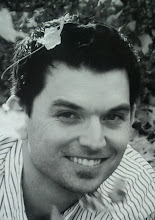
Think about what would happen if the first ball is brought straight back and released vs. bringing the ball back at an angle and allowing it to hit the row of stationary balls off-center. Which scenario would produce higher energy transfer? That is actually a trick question because the answer is both scenarios actually result in the same amount of energy transfer (the first ball will stop moving and send it's energy into the others; the ball in the second scenario will transfer it's energy into the air in addition to the next ball). The proper question to ask, on the other hand, is which scenario would produce higher efficiency of energy transfer? Obviously, the ball that was brought straight back and released into the row of stationary balls will produce higher efficiency. So, our case has been built in terms of physics. Now let's apply it to golf.
The golf swing is a complex motion requiring many moving parts all at one time. The end goal is to hit the ball, but in order for that to happen efficiently, those moving parts must act in a coordinated effort (i.e. from the above illustration, the golfer should mimic the ball that moves straight back, not off-line, for maximum efficiency). Most of the energy in a golf swing originates from resistance between the player and the ground. That energy is coupled with the potential energy that is stored in the body-coil at the top of the swing. It is at this point that it becomes very important to utilize the proper Kinematic Sequence and efficient functional movements in order to deliver the club back to the ball with the most available power. The downswing should begin from the top with the hips leading the way. When the hips reach their final destination (after turning to the left), they decelerate, effectively transferring their energy into the shoulders. Then the shoulders repeat this process and transfer the hip and shoulder energy into the arms. Then, just before impact, the arms should decelerate, releasing the hip/shoulder/arm energy into the clubhead for maximal energy transfer. In addition to this sequence, the body must be in the proper position during the swing to allow the clubface to be in proper position at impact for the desired shot-shape. You do not need to worry about all of these angles and sequences as a player because there are TPI professionals that do this for a living. When a golf professional and a medical professional work together, the student's results can be magnified. If you are in the Memphis, TN area, call us at Germantown Golf Fitness @ (901) 590-1065 for more information. If you are not in this area, look on the MyTPI website for a TPI professional in your area.
All the best,
Nathan Williams, DC
1 - Sieniutycz, De Vos. Thermodynamics of Energy Conversion and Transport. Spinger. 2000.


No comments:
Post a Comment